Deborah Hufford's Blog: https://www.NotesfromtheFrontier.com, page 3
January 19, 2024
Blood to Rubies IMAGE SHOWCASE: David Jensen
During my many years of writing, researching and publishing my debut novel, Blood to Rubies, I met so many extraordinary people, among them Nez Perce elders and tribal members, photographers, authors, and historical scholars. I pored over hundreds of books with archival images of frontier photographers from the 1800s, some who became very famous, some who remain unknown today.

I used David Jensen's spectacular image of the Lostine River, near Wallowa Lake for the opening image of Chapter 40, "echoes of stone," page 201. No doubt Chief Joseph played on the banks of the Lostine River during his childhood, very near Chief Joseph’s ancestral home.

David Jensen is an award-winning fine art and landscape photographer who has lived for thirty years at the foot of Wallowa Lake, Oregon. He had produced more than 40,000 photographs throughout the Pacific Northwest, along the Pacific coast from Canada to Mexico. His work has appeared in National Geographic, Time-Life books, Sierra Club, Audubon, numerous other magazines, books, and calendar publishers. His photography was also featured on Oregon Public Broadcasting’s Art Beat program. Fine art galleries across Oregon feature his work.
You can view his photographs at: ,,www.djensenphotography.com
David's prints can also be purchased at: ,,www.agpix.com/djensen
You may also enjoy this related post:
• ,https://www.notesfromthefrontier.com/post/
OTHER SHOWCASE POSTS HERE
ABOUT THE IMAGES IN BLOOD TO RUBIES
My debut novel is extremely unique in historical fiction since it features 70 black-and-white images. I searched high and low to find these images and worked with the world's most iconic libraries, including the Smithsonian, Library of Congress, National Archives, the Beinecke Rare Book Library at Yale University, the National Park Service, the Nez Perce Historical Park Service, the Polish Digital Equestrian Library, special private collections, and many state historical societies. The images help tell the story of my main character, a fictional frontier photographer, Frederick Cortland. Many are 1800s archival images from real frontier photographers. But some are from the world's leading contemporary photographers of the American West, of horses, and of the Nez Perce.
To learn more about the photographers and their work featured in Blood to Rubies, go to my author site at DeborahHufford.com. Go to NEW NOVEL in the menu, then ABOUT THE IMAGES listed below. There, you'll find brief biographies of these famous photographers, illustrators, and Nez Perce elders and links to their works
and professional pages. I am so incredibly honored to have worked with them!
THANK YOU ALL FOR SHARING THIS JOURNEY WITH ME❣️
Originally posted January 19, 2024 on NotesfromtheFrontier.com and Facebook.
© 2024 NOTES FROM THE FRONTIER
Blood to Rubies IMAGE SHOWCASE: Paul Wakefield
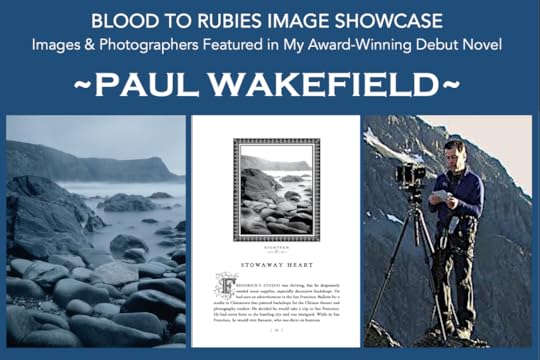
During my many years of writing, researching and publishing my debut novel, Blood to Rubies, I met so many extraordinary people, among them Nez Perce elders and tribal members, photographers, authors, and historical scholars. I pored over hundreds of books with archival images of frontier photographers from the 1800s, some who became very famous, some who remain unknown today.
Paul Wakefield's atmospheric photograph of the rugged shoreline of Traethllyfn, Dyfed, in Wales, opens Chapter 18, "stowaway heart," page 83, in Blood to Rubies. This chapter tells the story of one of the main characters, Ransom Fallon, who is forced to escape his homeland of Wales after killing a wealthy English landowner who had just raped his true love from childhood. The misty, mysterious, even melancholy image seems to capture the Ransom's longing in "stowaway heart."
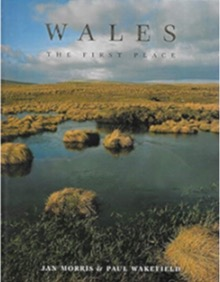
This image is from Paul Wakefield's beautiful book Wales: The First Place, Brockhampton Press Ltd., 1998. Paul Wakefield is a world-renowned photographer who has had exhibits all over the world and won many awards, including the prestigious D&AD (Design & Art Direction) Award, Association of Photographs Gold Medal, and the Grand Prix de L’APPM. View more of his work at:
You may also enjoy this related post:
• ,https://www.notesfromthefrontier.com/post/
OTHER SHOWCASE POSTS HERE
ABOUT THE IMAGES IN BLOOD TO RUBIES
My debut novel is extremely unique in historical fiction since it features 70 black-and-white images. I searched high and low to find these images and worked with the world's most iconic libraries, including the Smithsonian, Library of Congress, National Archives, the Beinecke Rare Book Library at Yale University, the National Park Service, the Nez Perce Historical Park Service, the Polish Digital Equestrian Library, special private collections, and many state historical societies. The images help tell the story of my main character, a fictional frontier photographer, Frederick Cortland. Many are 1800s archival images from real frontier photographers. But some are from the world's leading contemporary photographers of the American West, of horses, and of the Nez Perce.
To learn more about the photographers and their work featured in Blood to Rubies, go to my author site at DeborahHufford.com. Go to ,NEW NOVEL, in the menu, then press ,ABOUT THE IMAGES. There, you'll find brief biographies of these famous photographers, illustrators, and Nez Perce elders and links to their works
and professional pages. I am so incredibly honored to have worked with them!
THANK YOU ALL FOR SHARING THIS JOURNEY WITH ME❣️
Originally posted January 5, 2024 on NotesfromtheFrontier.com and Facebook.
© 2024 NOTES FROM THE FRONTIER
Blood to Rubies IMAGE SHOWCASE: Chuck Haney
My debut novel, Blood to Rubies, is unique in historical fiction
in that it features 70 black-and-white images. Many are archival images
from famous frontier photographers of the 1800s. Others are from
some of the world's greatest contemporary photographers of
the American West, landscapes, horses, and the Nez Perce.
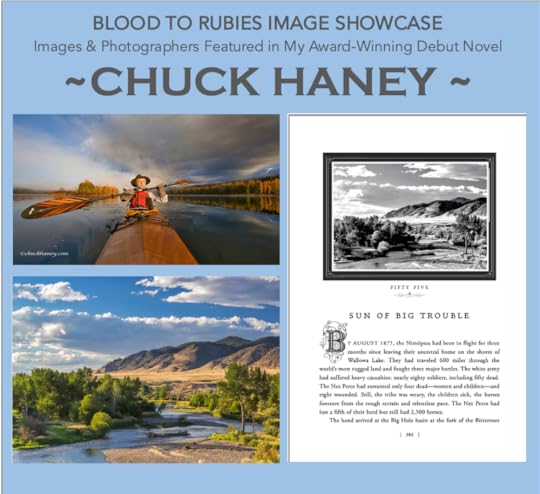
During my many years of writing, researching and publishing my debut novel, Blood to Rubies, I met so many extraordinary people, among them Nez Perce elders and tribal members, photographers, authors, and historical scholars. I pored over hundreds of books with archival images of frontier photographers from the 1800s, some who became very famous, some who remain unknown today.
Chuck Haney's spectacular photograph of the Big Hole Valley in southwest Montana opens Chapter 55, sun of big trouble, page 302. The Nez Perce suffered devastating losses in 1877 at the Big Hole battlefield during a US Army ambush.

Chuck is an award-winning, internationally-known landscape photographer who lives in Whitefish, Montana, several hours east of Bear Paw Battlefield. He hosts photography workshops at some of the most beautiful places in the West and the world, including America's national parks. His work has been featured in numerous publications and sixteen gorgeous coffee table books featuring Glacier National Park, Theodore Roosevelt National Park, Death Valley National Park, The Badlands, Flathead Country, North Dakota, Montana, San Francisco, and other areas.
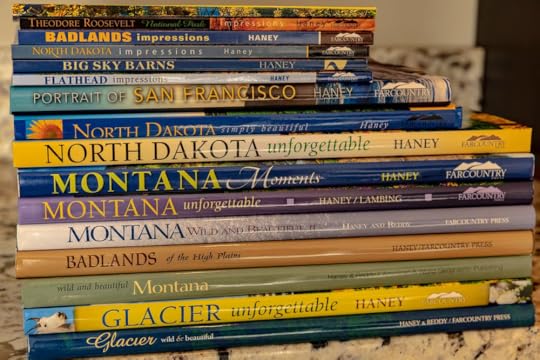
View his work, learn more about his photography tours, and purchase his prints and coffee table books at:
You may also enjoy this related post:
• ,https://www.notesfromthefrontier.com/post/
OTHER SHOWCASE POSTS HERE
ABOUT THE IMAGES IN BLOOD TO RUBIES
My debut novel is extremely unique in historical fiction since it features 70 black-and-white images. I searched high and low to find these images and worked with the world's most iconic libraries, including the Smithsonian, Library of Congress, National Archives, the Beinecke Rare Book Library at Yale University, the National Park Service, the Nez Perce Historical Park Service, the Polish Digital Equestrian Library, special private collections, and many state historical societies. The images help tell the story of my main character, a fictional frontier photographer, Frederick Cortland. Many are 1800s archival images from real frontier photographers. But some are from the world's leading contemporary photographers of the American West, of horses, and of the Nez Perce.
To learn more about the photographers and their work featured in Blood to Rubies, go to my author site at DeborahHufford.com. Go to ,NEW NOVEL, in the menu, then press ,ABOUT THE IMAGES. There, you'll find brief biographies of these famous photographers, illustrators, and Nez Perce elders and links to their works
and professional pages. I am so incredibly honored to have worked with them!
THANK YOU ALL FOR SHARING THIS JOURNEY WITH ME❣️
Originally posted January 5, 2024 on NotesfromtheFrontier.com and Facebook.
© 2024 NOTES FROM THE FRONTIER
Blood to Rubies IMAGE SHOWCASE: Randolph Fritz
My debut novel, Blood to Rubies, is unique in historical fiction
in that it features 70 black-and-white images. Many are archival images
from famous frontier photographers of the 1800s. Others are from
some of the world's greatest contemporary photographers of
the American West, landscapes, horses, and the Nez Perce.

During my many years of writing, researching and publishing my debut novel, Blood to Rubies, I met so many extraordinary people, among them Nez Perce elders and tribal members, photographers, authors, and historical scholars. I pored over hundreds of books with archival images of frontier photographers from the 1800s, some who became very famous, some who remain unknown today.
Award-winning Idaho photographer, Randolph Fritz, provided the wonderful image of the Wallowa Falls in Oregon, that opens Chapter 49, worlds apart, on page 264. (An archival image of a Nez Perce couple in the 1880s was dropped into his photograph, symbolizing the Nez Perce wedding that takes place in the chapter.) The Wallowa Falls is near Chief Joseph’s ancestral home of Lake Wallowa in the far northeast corner of Oregon, near the Idaho border. Randolph Fritz's award-winning work features magnificent western landscapes of farms, ranches, barns, and nature.
His prints are for sale at:
Saatchi Art: ,saatchiart.com/account/profile/1132600
Fine Art America: ,fineartamerica.com/profiles/randolph-fritz
You may also enjoy this related post:
• ,https://www.notesfromthefrontier.com/post/
OTHER SHOWCASE POSTS HERE
ABOUT THE IMAGES IN BLOOD TO RUBIES
My debut novel is extremely unique in historical fiction since it features 70 black-and-white images. I searched high and low to find these images and worked with the world's most iconic libraries, including the Smithsonian, Library of Congress, National Archives, the Beinecke Rare Book Library at Yale University, the National Park Service, the Nez Perce Historical Park Service, the Polish Digital Equestrian Library, special private collections, and many state historical societies. The images help tell the story of my main character, a fictional frontier photographer, Frederick Cortland. Many are 1800s archival images from real frontier photographers. But some are from the world's leading contemporary photographers of the American West, of horses, and of the Nez Perce.
To learn more about the photographers and their work featured in Blood to Rubies, go to my author site at DeborahHufford.com. Go to ,NEW NOVEL, in the menu, then press ,ABOUT THE IMAGES. There, you'll find brief biographies of these famous photographers, illustrators, and Nez Perce elders and links to their works
and professional pages. I am so incredibly honored to have worked with them!
THANK YOU ALL FOR SHARING THIS JOURNEY WITH ME❣️
Originally posted January 5, 2024 on NotesfromtheFrontier.com and Facebook.
© 2024 NOTES FROM THE FRONTIER
January 18, 2024
Blood to Rubies IMAGE SHOWCASE: Ansel Adams

My debut novel, Blood to Rubies, is unique in historical fiction in that it features 70 black-and-white images. Many are archival images
from famous frontier photographers of the 1800s.
Others are from some of the world's greatest contemporary photographers of the American West, landscapes, horses, and the Nez Perce.
During my many years of writing, researching and publishing my debut novel, BLOOD TO RUBIES, I met so many extraordinary people, among them Nez Perce elders and tribal members, photographers, authors, and historical scholars. I pored over hundreds of books with archival images of frontier photographers in the 1800s, some who became very famous, some who remain unknown today.
Perhaps the most famous photographer of the West is Ansel Adams. He lived from the turn-of-the-century (born in 1902) and lived into modern times (died in 1984) and, in a sense, bridged the "Old West" of 1800s and modern times. Today, descendants of Ansel Adams control the copyright of the bulk of Ansel Adams work. However, during the war years of 1941-1942, Adams was commissioned by the U.S. government to photograph national parks and their monuments. Today, most of these images are public domain.
Perhaps Adam's most famous photograph, shown above, “The Tetons and the Snake River," was used in the opening pages of Blood to Rubies on a dramatic double page spread, pages xii-xiii. The image is relevant to the book because the Snake River is in Nez Perce territory, now the Grand Teton National Park, Wyoming, only thirty miles from Yellowstone National Park. The image showcases the opening prose poem that sets the tone of beauty and magnificence, mystery and lost legacies that the American West embodies.
“The Tetons and the Snake River," by Ansel Adams, photographed in 1942, was obtained from the National Archives and Records Administration, Records of the National Park Service. (79-AAG-1).
You may also enjoy this related post:
• ,https://www.notesfromthefrontier.com/post/the-magical-lens-of-ansel-adams
ABOUT THE IMAGES IN BLOOD TO RUBIES
My debut novel is extremely unique in historical fiction since it features 70 black-and-white images. I searched high and low to find these images and worked with the world's most iconic libraries, including the Smithsonian, Library of Congress, National Archives, the Beinecke Rare Book Library at Yale University, the National Park Service, the Nez Perce Historical Park Service, the Polish Digital Equestrian Library, special private collections, and many state historical societies. The images help tell the story of my main character, a fictional frontier photographer, Frederick Cortland. Many are 1800s archival images from real frontier photographers. But some are from the world's leading contemporary photographers of the American West, of horses, and of the Nez Perce.
To learn more about the photographers and their work featured in Blood to Rubies, go to my author site at DeborahHufford.com. Go to ,NEW NOVEL, in the menu, then press ,ABOUT THE IMAGES. There, you'll find brief biographies of these famous photographers, illustrators, and Nez Perce elders and links to their works
and professional pages. I am so incredibly honored to have worked with them!
THANK YOU ALL FOR SHARING THIS JOURNEY WITH ME❣️
Originally posted January 5, 2024 on NotesfromtheFrontier.com and Facebook.
© 2024 NOTES FROM THE FRONTIER
Blood to Rubies IMAGE SHOWCASE: Erika Larsen
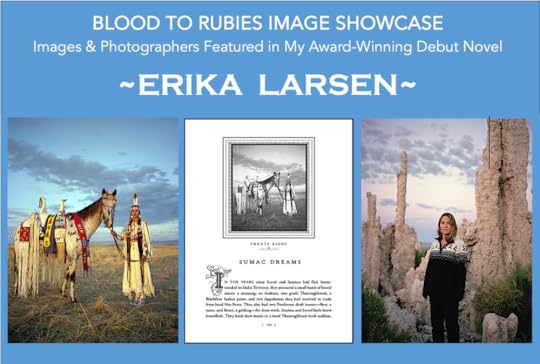
My debut novel, Blood to Rubies, is unique in historical fiction in that it features 70 black-and-white images. Many are archival images from famous frontier photographers of the 1800s. Others are from some of the world's greatest contemporary photographers of the American West, landscapes, horses, and the Nez Perce.
During my many years of writing, researching and publishing my debut novel, BLOOD TO RUBIES, I met so many extraordinary people, among them Nez Perce elders and tribal members, photographers, authors, and historical scholars.

This photograph of a Nez Perce woman and her Appaloosa opens Chapter 28, sumac dreams. It was taken by one of the world's greatest photographers, Erika Larsen. The photograph features Nez Perce woman Katie Harris and her Appaloosa, Ollokot (named after Chief Joseph's warrior brother), both in spectacular Nez Perce regalia. This photograph was featured in National Geographic's 2014 issue, "People of the Horse."
Erika Larsen’s work has appeared in the world’s leading publications, including The New York Times Magazine and National Geographic. She has also been commissioned to do portraits of famous persons, including Dr. Jane Goodall, Oprah Winfrey, and Nancy Pelosi. View more of Erika’s photographs and buy prints of her work at www.erikalarsenphoto.com.
ABOUT THE IMAGES IN BLOOD TO RUBIES
My debut novel is extremely unique in historical fiction since it features 70 black-and-white images. I searched high and low to find these images and worked with the world's most iconic libraries, including the Smithsonian, Library of Congress, National Archives, the Beinecke Rare Book Library at Yale University, the National Park Service, the Nez Perce Historical Park Service, the Polish Digital Equestrian Library, special private collections, and many state historical societies. The images help tell the story of my main character, a fictional frontier photographer, Frederick Cortland. Many are 1800s archival images from real frontier photographers. But some are from the world's leading contemporary photographers of the American West, of horses, and of the Nez Perce.
To learn more about the photographers and their work featured in Blood to Rubies, go to my author site at DeborahHufford.com. Go to ,NEW NOVEL, in the menu, then press ,ABOUT THE IMAGES. There, you'll find brief biographies of these famous photographers, illustrators, and Nez Perce elders and links to their works and professional pages. I am so incredibly honored to have worked with them!
THANK YOU ALL FOR SHARING THIS JOURNEY WITH ME❣️
Originally posted January 5, 2024 on NotesfromtheFrontier.com and Facebook.
You may also enjoy these related posts:
• ,,https://www.notesfromthefrontier.com/post/ancient-nez-perce-art-still-flourishes
• ,,https://www.notesfromthefrontier.com/post/angela-s-awesome-art-her-appy-cappy
© 2024 NOTES FROM THE FRONTIER
January 10, 2024
A Tribute to My Great Book Designer
I've been blessed with many miracles in my journey to publish my life's work, historical debut novel, Blood to Rubies. Meeting the great book designer, Christine Kettner, and getting the chance to work with her is one of them.
Many of you know that I battled kidney failure for decades. Two years ago, I was diagnosed with end-stage kidney failure, put on the kidney donation list, and went through a harrowing gauntlet to find a donor. Finally, my husband and I got the news that he qualified to be my kidney donor. Miracle #1 . That very same day, I also found my wonderful publisher. Miracle #2 .
Miracle #3 happened shortly thereafter when my publisher introduced me to my assigned book designer, Christine Kettner. Fate seemed to have brought us together. Christine and I had never met until she began working on my debut novel, Blood to Rubies. Both of us had grown up admiring Chief Joseph. Christine would become one of America's best book designers at the nation's leading publishing houses.
But it would not be until late in her career that she would work on a project that would arc back to her youth: Blood to Rubies, about Chief Joseph. She told my publisher she was destined to work on my book because her BFA project in art school had been a handmade book about Chief Joseph she'd created decades before! She had studied under the instruction of the great Art Director, Bea Feitler, Senior Art Director for Rolling Stone Magazine and in addition, had started Ms. Magazine with Gloria Steinhem. As you can see, her amazing images powerfully tell the story of Chief Joseph.

Blood to Rubies is different from other historical fiction books in that it includes 70 archival images as headers of each chapter. Many images were taken in the 1800s by famous frontier photographers. So Blood to Rubies involved far more design work than other novels.
I believe Christine was destined to work on my book. Truly, I cannot imagine a better designer for Blood to Rubies. She threw herself into my book project with as much passion as I myself had written it! Her sensitivity to the image treatments and the period in which they were taken was meticulous and simply magnificent in nuance.
The cover design was first. As with all her work, she went far beyond the call of duty, designing six different covers from which I and my publisher could choose. They were all wonderful! But one in particular jumped out. It did not reference Chief Joseph, but instead my book's heroine, Sorrel Lanning, the young and fierce Irish immigrant woman who homesteads with her Irish adopted father, Seamus. The cover featured an intense closeup of her "piercing blue eyes," which I referenced in the first chapter of the book. Below her arresting eyes is the title in a beautiful and unique type font. And below the title are wild horses running across a plains. A brilliant cover! Even from ten paces, her eyes stand out in a sea of book covers in a bookstore.
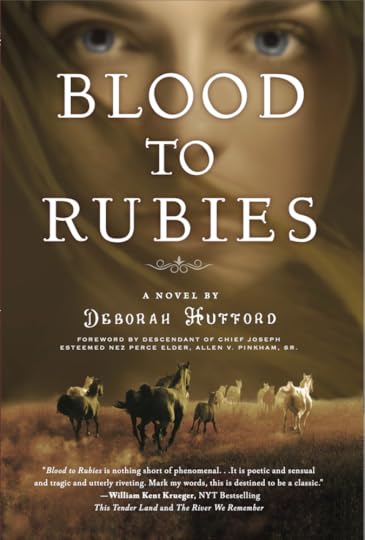
Once the cover was selected, it set the tone for the rest of the book and its internal pages. Christine threw herself into the design with the resolve of a great artist. I would get emails from her from all hours of the day and night, delivering such beautiful pages, it gave me shivers. I came to anticipate her messages with relish and so much excitement! The book I had worked on for nearly 30 years, through many hardships, was finally coming together before my eyes. And in such glorious pages, I could not believe my eyes!
As with all her work, Christine delivered so much more than was asked and created a book design that was beautifully elegant. Each chapter opens with an archival image. She wanted to showcase each photograph in a Victorian-style marquee that was appropriate to each image. If you have read Blood to Rubies, you know that it includes a wide variety of images from very gritty and graphic photographs to very luscious ones. In each case, she selected the perfect marquee.
In addition to the photograph treatments, Christine created chapter opening pages that are a visual delight for readers. The title treatments echo the wonderful cover type font. And she added a stunning decorative letter to begin the text. The entire effect is the graphic equivalent of a grand Victorian theater stage opening its velvet curtains ceremoniously, promising an upcoming story that will entice. (Hopefully, my words live up to her elegant introductions!) Here are some sample pages of opening chapter pages in Blood to Rubies:

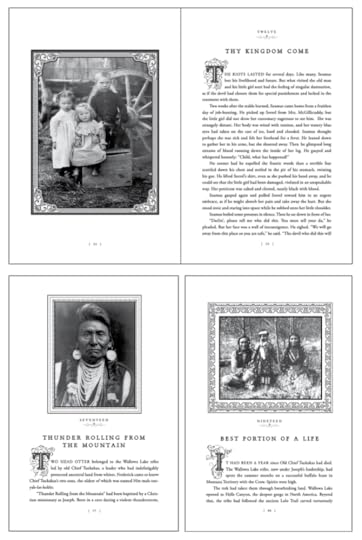
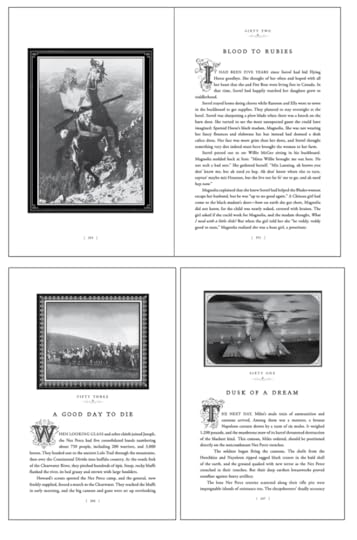
The old saying, "You can't judge a book by its cover," may certainly hold true in much of life. But, perhaps, in the case of my novel, Blood to Rubies can be judged by the cover. It is in part due to Christine's exquisite talent that Blood to Rubies has garnered so much success very early in its publishing career. Since it was published on September 19, just three months ago, it has become a bestseller on Amazon in all three formats (hardcover, softcover and E-book), reaching an incredible #11, right below the classic, Pulitzer Prize winning Lonesome Dove!
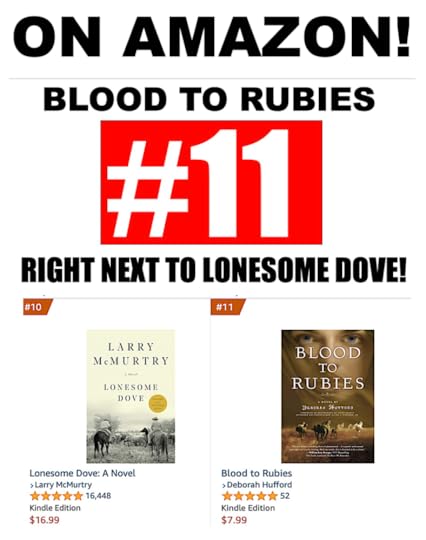
Blood to Rubies has already garnered numerous awards, including BOOK OF THE YEAR (American Writing Awards) and BEST DEBUT, BEST LITERARY, BEST WESTERN & BEST MULTICULTURAL in other literary award contests. In addition, Blood to Rubies has also been short listed for the prestigious Laramie Literary Award and long listed for the Somerset Literary Award. Both contests are still pending, as well as other awards announcements that will come in 2024.

As a debut author, I have been extremely fortunate to be given some wonderful reviews by giants in literature. Here's just a sampling. My front cover blurb from New York Times #1 bestselling William Kent Krueger is the best cover blurb on the planet:
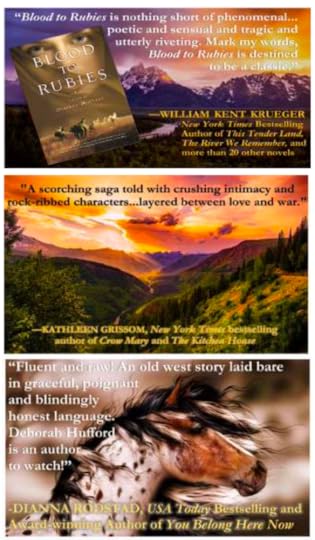
I am so grateful to Christine Kettner for the truly extraordinary and exemplary design she imbued my debut novel. Her work not only helped my book become a critically acclaimed bestseller very early in its publishing life, she gave me the gift of working with one of the most gifted designers in the book industry. And the process was simply magical.
There was one more "miracle" (some may call it a coincidence, but I know better!) that occurred during my design journey with Christine. She has had a very long and illustrious career working at the three largest publishing companies in the world, at each for at least a decade. And she's worked on many huge titles. Perhaps the biggest is the Narnia Chronicles (Harper Collins, US Editions). That series, the blockbuster precursor to the Harry Potter series, has sold more than 130 million copies globally to date. Christine did the original cover. Her unicorn with the tip of its horn dripping blood, took the publishing world by storm. The rest, as they say, is history!
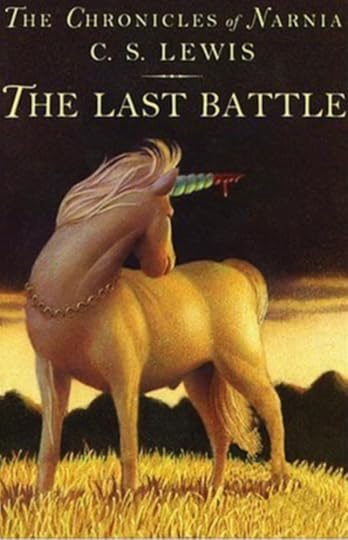
When Christine told me she had designed the original Narnia cover, I got chills down my spine. Above my desk in my study, I had framed a little cafe napkin with a unicorn on it. I had collected it from a bistro in Barcelona, while visiting our journalist daughter, who lives there. This was during a time when my kidney disease was deteriorating very quickly and the Sword of Damocles hung so low over me, I thought I would not live long enough to see my book published. I framed that little napkin as a gesture of hope and it hangs in my study. It says, : "NOTHING IS IMPOSSIBLE!"
It is true. I can attest. Miracles DO happen!

Originally posted January 10, 2024 on ,NotesfromtheFrontier.com and Facebook.
Read more about my novel and my writing journey at my author page at ,DeborahHufford.com
© 2024 NOTES FROM THE FRONTIER
May 26, 2023
ATTENTION: Lovers of Frontier History and Warrior Women!!
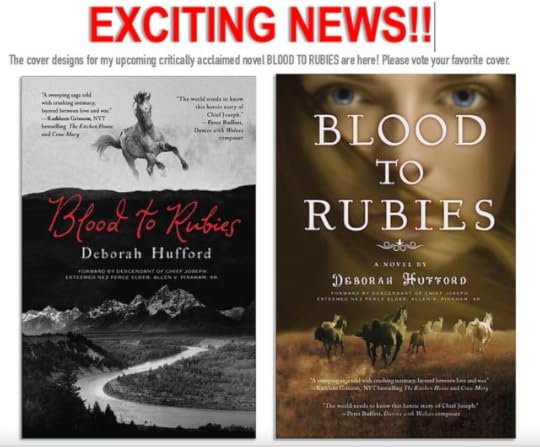
My frontier novel about Chief Joseph and his struggle to save his people in the Nez Perce War of 1877 is finally coming out! Can you help my publisher and I choose the best cover? PLEASE VOTE AT THIS LINK SO YOUR VOTE COUNTS!
,[https://www.koehlerbooks.com/cover-polls/] ,
BLOOD TO RUBIES is about two worlds colliding on the Western frontier and Chief Joseph's heroic struggle to save his tribe. I honor especially the women warriors who fought with Joseph--often overlooked in history. My book was vetted by the Nez Perce tribe and the Forward is written by Chief Joseph descendant and leading Nez Perce elder. A portion of the sales of BLOOD TO RUBIES will go to the Chief Joseph Foundation empowering Nez Perce youth, especially young women! (Many are direct descendants of Chief Joseph.)
Thank you Christina Talavera and the awesome members of Old West History & Cultures for helping us choose the best cover for BLOOD TO RUBIES. Read more about the novel at: www.DeborahHufford.com.
©2023 NOTES FROM THE FRONTIER
March 25, 2023
Chief Joseph's Heroic Struggle To Save His People
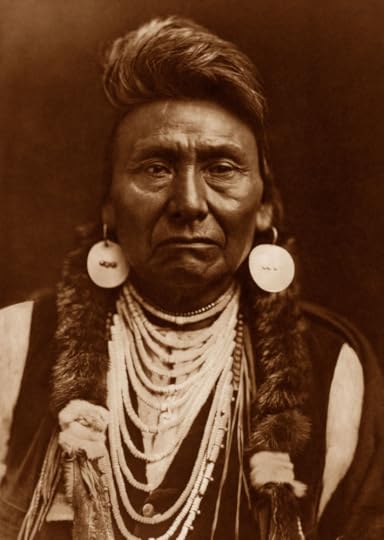
This month marks the 146th anniversary (in 2022) of the Nez Perce tribe's last month of freedom as a people.

In 1877, they were given an April 1st deadline to resettle on the reservation. But Joseph had already decided that they would not move to the reservation. Instead, they would try to escape to the Canadian border- the "Medicine Line"- to freedom. The Lakota Chief Sitting Bull and his people were already there. It it hard to imagine what the Nez Perce people must have felt preparing to leave their ancestral homeland of more than 10,000 years...
Joseph and his band began preparations to leave their ancestral lands of more than 10,000 years. The 750 tribe members and about 3,000 horses would have to traverse a brutal 1,500-mile exodus through the earth's most rugged terrain to reach freedom in Canada. Below is the route the Nez Perce took, fighting the pursuing U.S. Army the entire way.
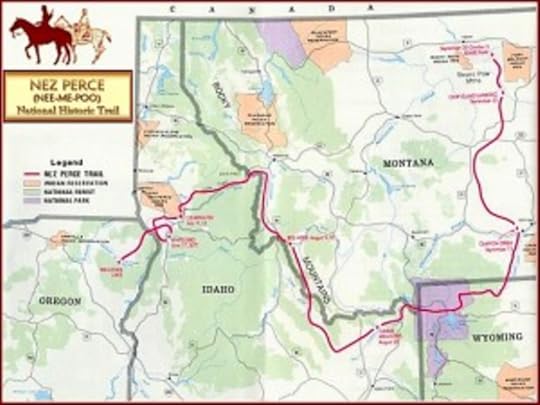
Chief Joseph and his people rode from beautiful Lake Wallowa in eastern Oregon, through the plunging Imnaha Valley and Hell’s Canyon (the deepest gorge in North America), over the Continental Divide FOUR TIMES, through dangerous rushing rivers, through Yellowstone Park (the sacred land the Nez Perce called “unfinished by God”), down rocky trails and up steep ascents, and finally, to the Plains and rolling swells of Montana. The trail stops at the Bear Paw Battlefield, just 30 miles from the Canadian border, where they fought their final battle.
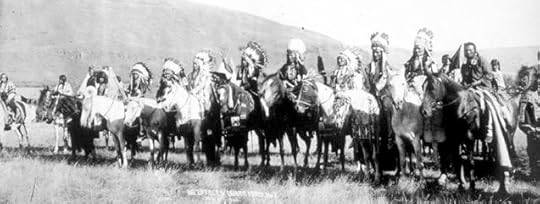
Today, every summer, every year, hundreds of riders--descendants of Chief Joseph and other Nez Perce and people of all colors from around the world--saddle up their spotted Appaloosa horses to retrace the arduous trail Chief Joseph and his Nez Perce tribe took 146 years ago to escape to freedom while the U.S. Army pursued them. Each year, toward the end of July, a group of dedicated riders ride a hundred-mile segment of the 1,500 miles trek Joseph and his people took through the roughest terrain on the face of the earth.
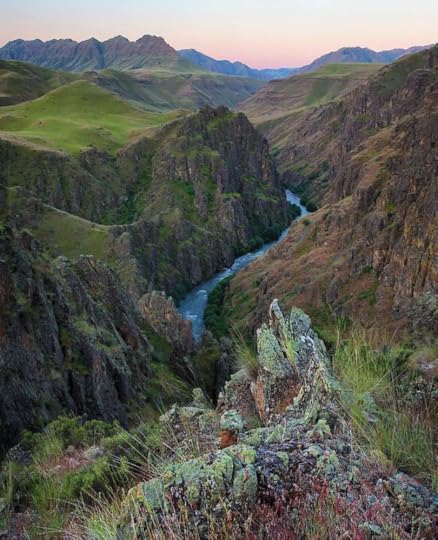
It’s a tradition that was started in 1965 by a handful of members of the still-young Appaloosa Horse Club. They were admirers of Chief Joseph and dedicated to the horses the Nez Perce had developed, trying to reincarnate the dazzling breed that had been cast to the winds of oblivion when Chief Joseph and his tribe finally surrendered in 1877. The Nez Perce would lose their land and the beloved horses they had carefully developed for generations. About 60 years after Joseph’s surrender, the Appaloosa Horse Club was formed. Thanks to that small group of Appaloosa lovers and Nez Perce tribal members, who joined in reclaiming their proud legacy, the Chief Joseph Trail Ride is a shining tradition that not only celebrates a great man and his great people, but a great horse breed that is now admired and loved around the world. (SEE POST LINK BELOW ABOUT THE APPALOOSA BREED!)
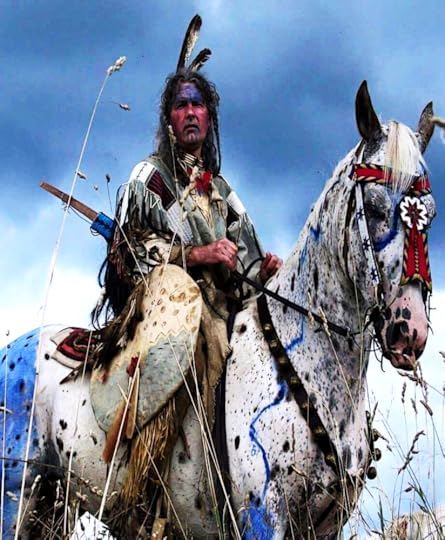
The complete route is divided up into thirteen 100-mile segments, one segment per year ridden in order, following as closely as is logistically possible to Joseph’s original route. (In 1877, the land was still wilderness and unsettled for the most part. Today, nearly all the land is privately owned, so permissions and logistics are challenging to navigate.) The ride takes thirteen years to complete all 13 segments of the cycle. Each day, the riders cover between 20-25 miles of the trail, so horses and riders must be in top condition. All horses must be registered Appaloosas. But it’s not all hard riding and sore butts. At the end of the day, there are many events, music, great food and drink, campfires, and stories. And lifelong friendships are made.
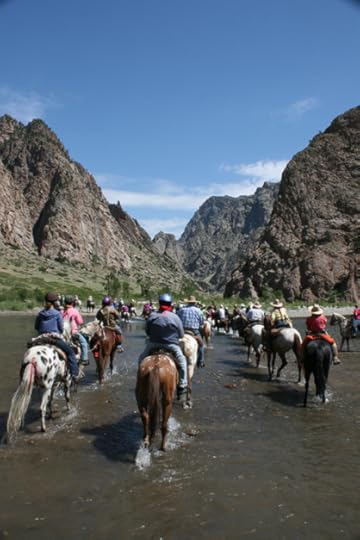
The chronological segments include:
2017 - Joseph to Doug Bar, OR (Wallowa Lake, Imnaha Canyon, Doug Bar) 2018 - Grangeville/Tolo Lake Loop, ID 2019 - Stites to Mussellshell, ID (Camas Prairie, Clearwater Battlefield) 2020 - Mussellshell, ID to Wendover Camp (Lolo Trail, Clearwater National Forest to Packer Meadows) (This segment had to be cancelled because of the COVID.) 2021 - Lolo Hot Springs to Stevensville, MT (Ft. Fizzle, Bitterroot Valley) (This segment had to be cancelled because of dangerous forest fires on the trail.) 2022 - Darby, MT to Big Hole Battlefield 2023 - Jackson, MT to Leadore, ID (Horse Prairie, Bannock Pass, Birch Creek) 2024 - Spencer, ID to West Yellowstone (Camas Creek Battlefield, West Yellowstone) 2025 - West Yellowstone and Yellowstone Park 2026 - Cooke City, MT to Clark Fork River (Yellowstone Park, Absaroka Mtns, Dead Indian Hill, Sunlight Basin & "Suicide Slide") 2027 - Clark, WY to Laurel, MT (Yellowstone Valley, Canyon Creek Battlefield) 2028 - Ryegate to Roy, MT (Musselshell, Big Snowy and Judith Mountains) 2029 - James Kipp Park, Missouri River, Bear Paw BattlefieldThe Nez Perce exodus 146 years ago numbered about 750 tribal members, including 200 warriors, and about 3,000 horses. General Oliver Otis Howard was pursuing the them. Howard was a leading general in the Civil War at many key battles, including Bull Run, Antietam, Chancellorsville, and Gettysburg and had lost his right arm in battle. He was now charged with defeating Chief Joseph. He was determined to stop Joseph at the Clearwater and led 500 troops against Joseph’s 200 warriors and set up Gatling guns and howitzers on the bluffs of the Clearwater River to rain down destruction on the Indians.
But Nez Perce warriors attacked the soldiers on the bluffs from the back and the ammunition mule train and nearly captured it. They surrounded the troops on the bluffs and held them at bay until the entire Nez Perce tribe could cross the Clearwater River and begin their ascent into the Bitterroot Mountains to the Lolo Trail. Through feigning and flanking, the warriors held the U.S. troops for several days. The Nez Perce were known to have extremely keen sharpshooters and the Army suffered far greater casualties: 15 dead and 25 wounded, compared to four Nez Perce dead and six wounded. The battle was front-page news across the nation and the press dubbed Joseph the "Red Napoleon" because he and the other Nez Perce leaders had repeated outfought and outsmarted the Army. Americans watched in awe as the Nez Perce desperately outfought the U.S. Army and its best generals as they surged toward the Canadian border and freedom.
In recent years, the Chief Joseph Ride had to be cancelled a couple of years due to COVID and horrific forest fires that are ravaging the West, especially in Idaho. The annual ride honors that heroic and tragic exodus. Chief Joseph Trail riders spend many miles rocking in their saddles and listening to the hoofbeats of their spotted horses across the Oregon, Idaho and Montana wilderness and some of the most beautiful land on the face of the earth. They will cross the Clearwater River below the bluffs where Gatling guns and howitzers once thundered and the valley cracked with deadly gunfire. And they will try to imagine what it must have been like for Joseph and his people on that same trail 146 years ago.
You can learn more about the Chief Joseph Ride at these Facebook link:
,,www.facebook.com/ChiefJosephTrailRiders,
T,,he official FB site for the Chief Joseph Trail Riders
,,https://karenshorsetales.blogspot.com
Veteran trail rider, Karen Bumgarner's about riding the "Chief Jo"
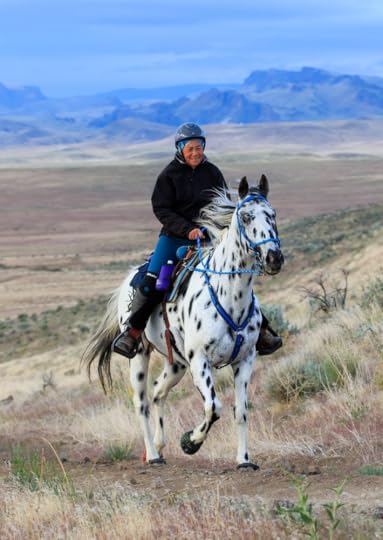
PHOTOS: (1) The Chief Joseph Trail Ride retraces the route Chief Joseph took in 1877, as he and other Nez Perce chiefs tried to save their people from imprisonment on the reservation by making a desperate attempt to escape to Canada. Over four months, the Nez Perce covered 1,500 miles in four states through some of the roughest and most spectacular terrain on earth, engaging the pursuing U.S. Army from all directions in a dozen battles. (2) Early in their trek, they had to navigate the treacherous Imnaha Valley and Hell’s Canyon, the deepest gorge in North America. (3) Chief Joseph’s band lived for many thousands of years on beautiful Wallowa Lake, now in eastern Oregon. The trail begins here, at their ancestral home. (4) The trail ends about 1,500 rugged miles later, on the Bear Paw Battlefield in northern Montana, just about 30 miles from the Canadian border. Shown in photo is Kristen Reiter, the chief organizer of the Chief Joseph Ride today, passing below the flag at half-staff at the Bear Paw Battlefield in 2016, her hat removed in honor of those who had fallen. Chief Joseph’s brother, the great warrior, Ollokot, died at the Bear Paw. The Nez Perce tribe provided a ceremonial blessing at the battlefield, with drumming and traditional song. Then Nez Perce youth participated in the Empty Saddle presentation to honor their dead. All participated in a Healing Ceremony at the end, when a Nez Perce elder offered a prayer of peace. Photo by April Herrin. (5) Horses and riders fording a river on the Chief Joseph Trail. Photo by Kristen Reiter. (6) The cover of the first Chief Joseph Trail rider brochure in 1965. (7) Hundreds of Chief Joseph riders spread out on a plain in central Montana. (8) Veteran Chief Joseph trail rider and very successful competitive national endurance rider, Karen Bumgarner, on her gorgeous Appaloosa, Rio. This photograph made the recent March/April 2019 cover of Appaloosa Journal! Appaloosas are renowned for their endurance and stamina. (9) A map of the 1,500-mile Chief Joseph Trail from Wallowa .
"Chief Joseph's Great Exodus to Save His People" was originally published on October 1, 2019 Facebook & ,NotesfromtheFrontier.com
184,834 views/ 1,682 likes
You may also find these related posts of interest:
©2023 Notes from the Frontier
Chief Joseph's Terrible Dilemma
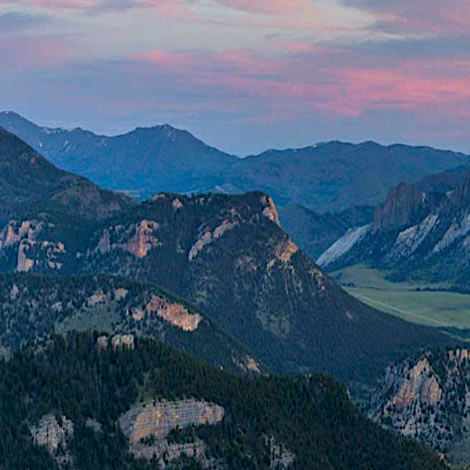
Joseph and his band began preparations to leave their ancestral lands of more than 10,000 years. The 750 tribe members and about 3,000 horses would have to traverse a brutal 1,500-mile exodus through the earth's most rugged terrain to reach freedom in Canada. Below is the route the Nez Perce took, fighting the pursuing U.S. Army the entire way.

Chief Joseph and his people rode from beautiful Lake Wallowa in eastern Oregon, through the plunging Imnaha Valley and Hell’s Canyon (the deepest gorge in North America), over the Continental Divide FOUR TIMES, through dangerous rushing rivers, through Yellowstone Park (the sacred land the Nez Perce called “unfinished by God”), down rocky trails and up steep ascents, and finally, to the Plains and rolling swells of Montana. The trail stops at the Bear Paw Battlefield, just 30 miles from the Canadian border, where they fought their final battle.

Today, every summer, every year, hundreds of riders--descendants of Chief Joseph and other Nez Perce and people of all colors from around the world--saddle up their spotted Appaloosa horses to retrace the arduous trail Chief Joseph and his Nez Perce tribe took 146 years ago to escape to freedom while the U.S. Army pursued them. Each year, toward the end of July, a group of dedicated riders ride a hundred-mile segment of the 1,500 miles trek Joseph and his people took through the roughest terrain on the face of the earth.
It’s a tradition that was started in 1965 by a handful of members of the still-young Appaloosa Horse Club. They were admirers of Chief Joseph and dedicated to the horses the Nez Perce had developed, trying to reincarnate the dazzling breed that had been cast to the winds of oblivion when Chief Joseph and his tribe finally surrendered in 1877. The Nez Perce would lose their land and the beloved horses they had carefully developed for generations. About 60 years after Joseph’s surrender, the Appaloosa Horse Club was formed. Thanks to that small group of Appaloosa lovers and Nez Perce tribal members, who joined in reclaiming their proud legacy, the Chief Joseph Trail Ride is a shining tradition that not only celebrates a great man and his great people, but a great horse breed that is now admired and loved around the world. (SEE POST LINK BELOW ABOUT THE APPALOOSA BREED!)
[image error]The complete route is divided up into thirteen 100-mile segments, one segment per year ridden in order, following as closely as is logistically possible to Joseph’s original route. (In 1877, the land was still wilderness and unsettled for the most part. Today, nearly all the land is privately owned, so permissions and logistics are challenging to navigate.) The ride takes thirteen years to complete all 13 segments of the cycle. Each day, the riders cover between 20-25 miles of the trail, so horses and riders must be in top condition. All horses must be registered Appaloosas. But it’s not all hard riding and sore butts. At the end of the day, there are many events, music, great food and drink, campfires, and stories. And lifelong friendships are made.
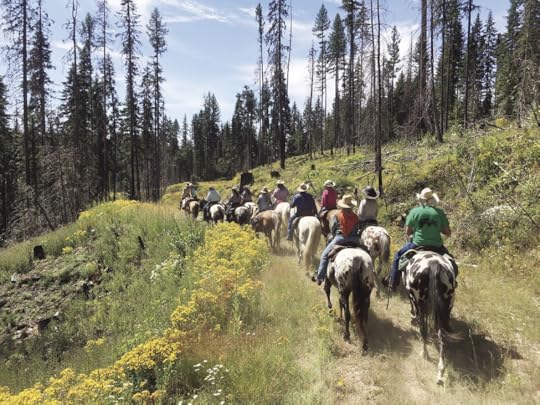
The chronological segments include:
2017 - Joseph to Doug Bar, OR (Wallowa Lake, Imnaha Canyon, Doug Bar) 2018 - Grangeville/Tolo Lake Loop, ID 2019 - Stites to Mussellshell, ID (Camas Prairie, Clearwater Battlefield) 2020 - Mussellshell, ID to Wendover Camp (Lolo Trail, Clearwater National Forest to Packer Meadows) (This segment had to be cancelled because of the COVID.) 2021 - Lolo Hot Springs to Stevensville, MT (Ft. Fizzle, Bitterroot Valley) (This segment had to be cancelled because of dangerous forest fires on the trail.) 2022 - Darby, MT to Big Hole Battlefield 2023 - Jackson, MT to Leadore, ID (Horse Prairie, Bannock Pass, Birch Creek) 2024 - Spencer, ID to West Yellowstone (Camas Creek Battlefield, West Yellowstone) 2025 - West Yellowstone and Yellowstone Park 2026 - Cooke City, MT to Clark Fork River (Yellowstone Park, Absaroka Mtns, Dead Indian Hill, Sunlight Basin & "Suicide Slide") 2027 - Clark, WY to Laurel, MT (Yellowstone Valley, Canyon Creek Battlefield) 2028 - Ryegate to Roy, MT (Musselshell, Big Snowy and Judith Mountains) 2029 - James Kipp Park, Missouri River, Bear Paw BattlefieldThe Nez Perce exodus 146 years ago numbered about 750 tribal members, including 200 warriors, and about 3,000 horses. General Oliver Otis Howard was pursuing the them. Howard was a leading general in the Civil War at many key battles, including Bull Run, Antietam, Chancellorsville, and Gettysburg and had lost his right arm in battle. He was now charged with defeating Chief Joseph. He was determined to stop Joseph at the Clearwater and led 500 troops against Joseph’s 200 warriors and set up Gatling guns and howitzers on the bluffs of the Clearwater River to rain down destruction on the Indians.

But Nez Perce warriors attacked the soldiers on the bluffs from the back and the ammunition mule train and nearly captured it. They surrounded the troops on the bluffs and held them at bay until the entire Nez Perce tribe could cross the Clearwater River and begin their ascent into the Bitterroot Mountains to the Lolo Trail. Through feigning and flanking, the warriors held the U.S. troops for several days. The Nez Perce were known to have extremely keen sharpshooters and the Army suffered far greater casualties: 15 dead and 25 wounded, compared to four Nez Perce dead and six wounded. The battle was front-page news across the nation and the press dubbed Joseph the "Red Napoleon" because he and the other Nez Perce leaders had repeated outfought and outsmarted the Army. Americans watched in awe as the Nez Perce desperately outfought the U.S. Army and its best generals as they surged toward the Canadian border and freedom.
In recent years, the Chief Joseph Ride had to be cancelled a couple of years due to COVID and horrific forest fires that are ravaging the West, especially in Idaho. The annual ride honors that heroic and tragic exodus. Chief Joseph Trail riders spend many miles rocking in their saddles and listening to the hoofbeats of their spotted horses across the Oregon, Idaho and Montana wilderness and some of the most beautiful land on the face of the earth. They will cross the Clearwater River below the bluffs where Gatling guns and howitzers once thundered and the valley cracked with deadly gunfire. And they will try to imagine what it must have been like for Joseph and his people on that same trail 146 years ago.
You can learn more about the Chief Joseph Ride at the Facebook link: www.facebook.com/ChiefJosephTrailRiders

PHOTOS: (1) The Chief Joseph Trail Ride retraces the route Chief Joseph took in 1877, as he and other Nez Perce chiefs tried to save their people from imprisonment on the reservation by making a desperate attempt to escape to Canada. Over four months, the Nez Perce covered 1,500 miles in four states through some of the roughest and most spectacular terrain on earth, engaging the pursuing U.S. Army from all directions in a dozen battles. (2) Early in their trek, the had to navigate the treacherous Imnaha Valley and Hell’s Canyon, the deepest gorge in North America. (3) Chief Joseph’s band lived for many thousands of years on beautiful Wallowa Lake, now in eastern Oregon. The trail begins here, at their ancestral home. (4) The trail ends about 1,500 rugged miles later, on the Bear Paw Battlefield in northern Montana, just about 30 miles from the Canadian border. Shown in photo is Kristen Reiter, the chief organizer of the Chief Joseph Ride today, passing below the flag at half-staff at the Bear Paw Battlefield in 2016, her hat removed in honor of those who had fallen. Chief Joseph’s brother, the great warrior, Ollokot, died at the Bear Paw. The Nez Perce tribe provided a ceremonial blessing at the battlefield, with drumming and traditional song. Then Nez Perce youth participated in the Empty Saddle presentation to honor their dead. All participated in a Healing Ceremony at the end, when a Nez Perce elder offered a prayer of peace. Photo by April Herrin. (5) Horses and riders fording a river on the Chief Joseph Trail. Photo by Kristen Reiter. (6) The cover of the first Chief Joseph Trail rider brochure in 1965. (7) Hundreds of Chief Joseph riders spread out on a plain in central Montana. (8) Veteran Chief Joseph trail rider and very successful competitive national endurance rider, Karen Bumgarner, on her gorgeous Appaloosa, Rio. This photograph made the recent March/April 2019 cover of Appaloosa Journal! Appaloosas are renowned for their endurance and stamina. (9) A map of the 1,500-mile Chief Joseph Trail from Wallowa Lake, Oregon, to Bear Paw Battlefield, Montana. The trail goes through four states: Oregon, Idhao, Wyoming, and Montana, and Yellowstone National Park. (10) The Appaloosas of the Chief Joseph Trail Riders grazing in the evening at camp. Photo by Kristen Reiter. (11) Many Nez Perce tribal members participate in the ride, wearing beautiful Nez Perce ceremonial dress. Some of Chief Joseph’s own descendants have ridden the ride! Photo by Jack McNeel. (12) An Appaloosa enjoying a good horse laugh at the end of the day on the Chief Joseph Trail. The event is a showcase of the world’s most beautiful, blooded Appaloosas and people who love them. It would make Chief Joseph proud.
,You may enjoy these related posts:
-The History of Appaloosashttps://www.notesfromthefrontier.com//post/the-history-of-appaloosas
- In Honor of Chief Josephhttps://www.notesfromthefrontier.com//post/in-honor-of-chief-joseph
"In the Steps of Chief Joseph" was first published on Facebook and NotesfromtheFrontier.com on July 22, 2019
185,853 views / 6,255 likes / 935 shares / 669 comments
©2023 Notes from the Frontier
https://www.NotesfromtheFrontier.com
- Deborah Hufford's profile
- 42 followers



